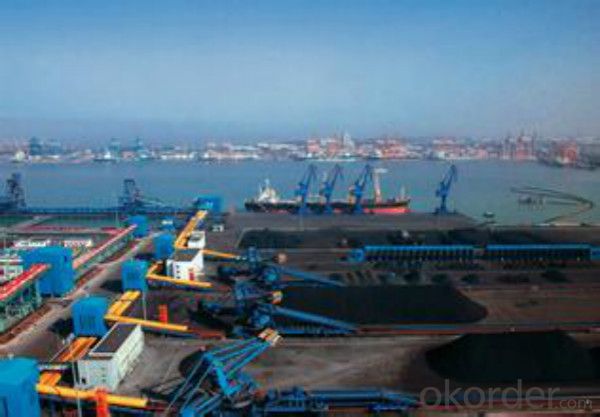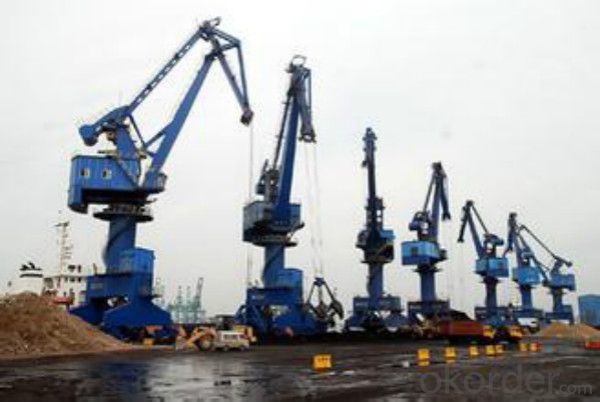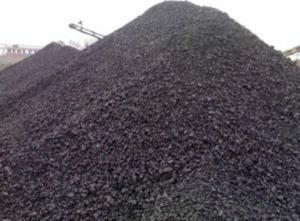Foundry Coke of China Supplier for Furnace Charge
- Loading Port:
- Qingdao
- Payment Terms:
- TT OR LC
- Min Order Qty:
- 2000 m.t
- Supply Capability:
- 10000 m.t/month
OKorder Service Pledge
OKorder Financial Service
You Might Also Like
Product Description
Foundry Coke is a kind of main raw materials used for steel making.
The coke handled by our couporation is made from superior coking coal of Shanxi province. Provided with the dvantages of low ash, low sulphur and high carbon.Our coke is well sold in European,American,Japanese and South-east Asian markets. Our owned Coke plant are located in Shanxi Province and supplying of you many kinds of coke.
Features
This is a special coke that is used in furnaces to produce cast and ductile iron products. It is a source of heat and also helps maintain the required carbon content of the metal product. Foundry coke production requires lower temperatures and longer times than blast furnace coke.
Specification
Fixed Carbon | Sulphur Content | Moisture | V.Matter | Ash |
86%min | 0.7%max | 5%max | 1.2%max | 12%max |
88%min | 0.65%max | 5%max | 1.5%max | 10%max |
85%min | 0.8%max | 15%max | 2%max | 13.5%max |
Size: 60-90mm,90-120mm,120-150mm,150-180mm and so on.
Pictures


FAQ:
1 How long can we deliver the cargo?
Within 30 days after receiving the LC draft or down payment
2 Time for after-sales?
1 year.
- Q:How does carbon affect food production?
- There are several ways in which carbon impacts food production. Firstly, carbon dioxide (CO2) plays a vital role in photosynthesis, the process by which plants convert sunlight into energy and produce oxygen. Insufficient levels of carbon dioxide hinder plant growth and food production. However, excessive carbon emissions from human activities, such as the burning of fossil fuels, have led to increased concentrations of CO2 in the atmosphere. Initially, this can stimulate plant growth, but without a proper balance of essential nutrients, it can result in nutrient imbalances and reduced crop quality. Secondly, carbon is a crucial element in soil organic matter, which is essential for soil fertility and health. Soil organic matter retains moisture, enhances soil structure, and provides a habitat for beneficial microorganisms. Higher carbon levels in the soil promote healthier plant growth, increase nutrient availability, and improve water-holding capacity. Unfortunately, unsustainable agricultural practices like excessive tilling and deforestation deplete soil carbon, leading to decreased fertility, erosion, and reduced food production. Moreover, the rise in carbon emissions has contributed to global climate change, resulting in extreme weather events such as droughts, floods, and heatwaves. These events have devastating consequences for food production. Droughts reduce water availability, making it difficult for crops to grow, while floods can wash away entire harvests. Heatwaves damage crops, reduce yields, and increase the prevalence of pests and diseases. Climate change also alters rainfall patterns, affecting planting and harvesting schedules and disrupting agricultural systems. Furthermore, carbon emissions contribute to the acidification of oceans. The increased CO2 in the atmosphere leads to higher levels of dissolved carbon dioxide in seawater, forming carbonic acid. This acidification disrupts marine ecosystems, affecting the food chain and impacting fish populations, which serve as a crucial protein source for many people. To mitigate the negative impacts of carbon on food production, it is essential to reduce carbon emissions and transition to more sustainable agricultural practices. This includes adopting climate-smart farming techniques like agroforestry, conservation agriculture, and organic farming. These practices promote carbon sequestration in soils, reduce greenhouse gas emissions, enhance biodiversity, and improve soil health. Additionally, investing in research and development of climate-resilient crop varieties and improved irrigation systems can help minimize the effects of climate change on food production.
- Q:What is carbon dating and how does it work?
- Carbon dating is a scientific method used to determine the age of organic materials, such as plant or animal remains, by measuring the amount of radioactive carbon-14 present in the sample. Carbon-14 is a naturally occurring isotope of carbon that is constantly formed in the atmosphere through the interaction of cosmic rays with nitrogen atoms. Living organisms absorb carbon-14 while they are alive, and the level of carbon-14 in their tissues remains relatively constant. However, once an organism dies, it no longer takes in carbon-14, and the amount of carbon-14 in its remains gradually decreases over time through radioactive decay. By comparing the ratio of carbon-14 to stable carbon-12 in a sample, scientists can estimate the age of the organic material using known decay rates.
- Q:What are the effects of carbon emissions on the stability of volcanic regions?
- Carbon emissions can potentially have both positive and negative effects on the stability of volcanic regions. On one hand, increased carbon dioxide levels in the atmosphere can contribute to global warming, which in turn may lead to melting of glaciers and ice caps, resulting in a rise in sea level. This rise in sea level can increase the likelihood of volcanic flank collapse, as the added pressure weakens the stability of volcanic slopes. Additionally, global warming can also trigger more frequent and intense rainfall, potentially leading to increased erosion and landslides in volcanic areas. On the other hand, carbon dioxide emissions can also have a stabilizing effect on volcanic regions. The injection of carbon dioxide into volcanic systems can enhance the pressure within magma chambers, promoting magma crystallization and solidification. This process can reduce the likelihood of volcanic eruptions, as the solidified magma acts as a barrier that hinders the movement and release of magma. Overall, the effects of carbon emissions on the stability of volcanic regions are complex and dependent on various factors. It is crucial to continue studying these interactions to better understand the potential consequences and implications for volcanic hazards and the overall stability of volcanic regions.
- Q:Learn photography for nearly half a year, has always wanted to buy a tripod, want to buy carbon fiber tripod, what brand is better? The machine is D700+24-70About 3000 is too expensive ~ consider 1000 more just fine. Wage earners!
- In fact, only three foot two brands: brand and other brands of Gitzo
- Q:How does carbon impact the prevalence of tsunamis?
- Carbon dioxide does not directly impact the prevalence of tsunamis. Tsunamis are primarily caused by undersea earthquakes, volcanic eruptions, or underwater landslides. These events release massive amounts of energy into the water, generating powerful waves that can travel across the ocean and cause devastating destruction when they reach the coast. While carbon dioxide emissions do not directly cause tsunamis, they are linked to climate change, which can indirectly influence the occurrence and impact of these natural disasters. Increased levels of carbon dioxide and other greenhouse gases in the atmosphere contribute to global warming, resulting in rising sea levels. As sea levels rise, coastal areas become more vulnerable to the destructive power of tsunamis, as the waves can penetrate further inland. Furthermore, climate change can also affect the frequency and intensity of extreme weather events, such as hurricanes and tropical storms. These weather patterns can trigger underwater landslides or enhance the chances of volcanic eruptions, both of which can lead to tsunamis. In conclusion, while carbon dioxide emissions do not directly cause tsunamis, they play a role in the broader context of climate change, which can indirectly impact the prevalence and impact of tsunamis through rising sea levels and the potential for more frequent extreme weather events.
- Q:Is the hardness or softness of the steel with higher carbon content?
- Carbon is the major element in determining the properties of steel, because changes in carbon content lead directly to changes in crystal structure.
- Q:What are the impacts of carbon emissions on the stability of estuaries?
- Carbon emissions have significant impacts on the stability of estuaries. Increased carbon dioxide levels in the atmosphere lead to ocean acidification, which affects the pH balance of the water in estuaries. This acidification can disrupt the delicate balance of species within the estuary ecosystem, leading to declines in populations of organisms such as oysters, clams, and other shellfish. Additionally, carbon emissions contribute to global warming, which can lead to rising sea levels and increased storm intensity, both of which can cause erosion and loss of habitat in estuaries. Overall, carbon emissions have the potential to disrupt the stability and functioning of estuaries, threatening their biodiversity and ecological services.
- Q:How does carbon impact the ozone layer?
- Carbon does not directly impact the ozone layer. However, certain carbon compounds, such as chlorofluorocarbons (CFCs), can contribute to ozone depletion when released into the atmosphere.
- Q:Where do I buy DNF premium advanced carbon?
- Previously had to sell, then it is about 3 yuan, 10, 5 yuan, 20. Now it's gone. Only looking forward to the next holiday sets are sold.
- Q:How can Dungeon Fighter Online's superior furnace rock carbon be obtained?
- DNF advanced furnace carbon can acquire rock at the mall, priced at 450 points and 50 points 10 coupon coupon 1.The role is to use advanced furnace rock carbon can start at the Kylie advanced equipment reinforcement machine, strengthen the probability of success is greater!Point Keri election advanced strengthening, plus ten or more equipment to strengthen, the probability is 10% more than ordinary furnace carbon
1. Manufacturer Overview |
|
|---|---|
| Location | |
| Year Established | |
| Annual Output Value | |
| Main Markets | |
| Company Certifications | |
2. Manufacturer Certificates |
|
|---|---|
| a) Certification Name | |
| Range | |
| Reference | |
| Validity Period | |
3. Manufacturer Capability |
|
|---|---|
| a)Trade Capacity | |
| Nearest Port | |
| Export Percentage | |
| No.of Employees in Trade Department | |
| Language Spoken: | |
| b)Factory Information | |
| Factory Size: | |
| No. of Production Lines | |
| Contract Manufacturing | |
| Product Price Range | |
Send your message to us
Foundry Coke of China Supplier for Furnace Charge
- Loading Port:
- Qingdao
- Payment Terms:
- TT OR LC
- Min Order Qty:
- 2000 m.t
- Supply Capability:
- 10000 m.t/month
OKorder Service Pledge
OKorder Financial Service
Similar products
New products
Hot products





























